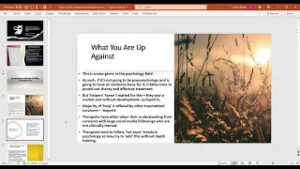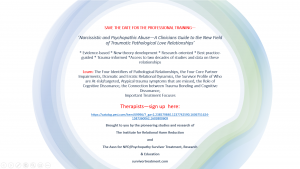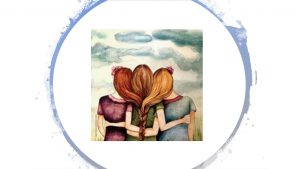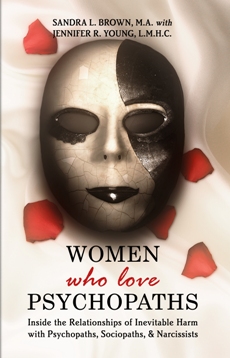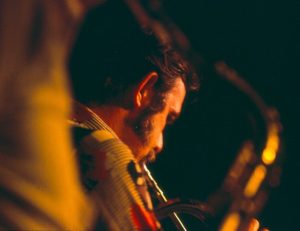 Genesis 1983
Genesis 1983
The Institute was birthed, or perhaps I should say ‘death-ed’ on May 13, 1983 when my father, renowned musician Frankie Brown, was murdered. By mistake, I was taken to the murder scene, which hadn’t yet been cleaned up, where I witnessed his bloody hand prints splayed on a parked car – the final moments of his life where he struggled to stand up after what would be fatal stab wounds. His aorta had been hit and had glugged massive amounts of blood onto the car and into the gutter—a scene no one should ever see, much less a 26-year-old daughter just 10 days before her wedding.
Those bloody handprints, seared into my brain like only PTSD can do., changed my life was forever in a moment’s notice. Those bloody hand prints flashed in and out my brain, dragging my emotional carcass along, in a trauma reaction that would last for years – in all reality, for the rest of my life.
But what became of it, at least as intrusive a thought as those bloody hand prints were, was the burning question “Who does that?” I had no idea how poignant that phrase would come to be in the totality of my life and what lay ahead of me as an impending career.
Yes, I had been told the ‘explanations’ of how that murder came to pass but I was more fixated on ‘why’ people can harm others, why there was an absence of conscience or remorse, or why, after I saw the perpetrator’s criminal history, there were ‘enduring patterns of behavior’ that keep repeating. The ‘why’ of the behavior motivation was not nearly as curious to me as the ‘why’ of his hard-wiring.
In the mere five seconds it took for someone to utter the words “Your father has been murdered”, my life as a happy 26-year-old ended and my life as a homicide survivor began—in all its legality and probate, in all of its parole hearings, in all of its flashbacks, in all of its pathology, basically, in all of its horror. I did not work in the field of psychology then, or even victim services, but on May 13, 1983, I became an advocate that day–although it would take years for my life to resemble anything that looked like functional advocacy.
For two years I was house bound with the shackles of unrelenting PTSD that kept me in flash-backs and ruminating the bloody hand prints and “Who Does That?” — trapped internally in a video and an audio that seemed like it would never end.
One day, out of desperation for me, a friend pulled out a phone book and began calling counselors and agencies trying to find someone – anyone – who knew how to help a homicide survivor with PTSD. Sadly, no one knew how.
I contemplated my life lived like this — without help, without an answer, without techniques, without a future of normalcy, without functionality. I cursed my life and said it should never be like this—that help for unusual circumstances be non-existent and I wondered how I could make it different, IF, if ever I got well.
A Ray of Light
Eventually, my friend located one of the country’s first pilot group therapy programs for homicide survivors and it was happening in the county where I lived! Twelve weeks later I was significantly improved and wanted to make sure others who lost a loved one to murder could find help too. I stayed on with the pilot group, wrote a grant, opened an office, accompanied survivors to their murder trials and began teaching others how to help homicide survivors.
But I was just a young woman with only a marketing background and without any real understanding, other than my personal symptoms, what PTSD was about. While I wanted to advocate for help being available, still running inside my mind was that ruminating question — “No conscience? Who does that?” The distraction of that internal existential echo was still deeply and persistently on my mind.
Late 1980s
After experiencing the murder and the catastrophic effects of PTSD, the logical conclusion of this experience would be that it would lead me to go to college for psychology, right? But I could not have been more surprised to end up in school for Theology, of all things. And yet even knee deep in school studying the theology of a God who was responsible for all of creation including the evolution of man-gone-wrong, was now the psychological question that turned into a spiritual question “No conscience? Who does that?”
It was during theology school in the late 1980s that I decided I was going to try to open a center for trauma victims. To do that, I decided I needed a better understanding of PTSD outside of my own experience. While I was still in theology school, I began traveling around the U.S. catching training in PTSD wherever I could and being tantalized by the neurobiology lectures on PTSD by Bessel van der Kolk and others. That training would become invaluable to me.
When I felt as if I had a handle on PTSD (mine, as well as the theory concept), I opened Bridgework, a 501c3 – a trauma disorder center that eventually became a personality disorder trauma center. Our clientele were largely females with histories involving personality disorders and trauma, a challenging combination for treatment that most counselors avoided. Somehow, I felt compelled that somewhere in Bridgework there was an answer to the question that had already spent five years rattling around in my head.
Early 1990s
In the early 1990s, I went back to school for my Master’s Degree in Counseling while simultaneously, and insanely, continuing to run Bridgework. Bridgework was rapidly growing and at its pinnacle, grew to 80 patients a week. Therapies included trauma survivor groups, groups for partners of Cluster B disorders, groups for children of Cluster Bs, art therapy groups, Psychomotor groups, and trainings for other therapists on how to work with Cluster B disorders.
Poignantly, later in 1991 – on September 30th, my father’s birthday – my first book, Counseling Victims of Violence, came out as a desk top reference for all forms of traumatic victimization.
Shortly after the release of the counseling book, I began writing about the tumultuous relationship dynamics of borderlines, narcissists, anti-socials and psychopaths and the poor confused states of their partners and children. From the mouths of our 80+ patients a week, I created the dynamic-based material for our Partners of Cluster B group therapy, for our individual counseling sessions with our Cluster B patients, for our Children of Cluster B group therapy, and for our Florida Training for Treating Cluster Bs.
I spent the early and mid-1990s traveling the highways and byways of personality disorder treatment training, acquiring the most up-to-date and the best-there-was in how to bring stability to the rocky world of personality disordered trauma survivors. This included training in Cognitive Behavioral Treatment (CBT), the hot new therapy then, Dialectical Behavioral Therapy (DBT), Psychomotor Therapy, Schema-Focused Therapy, various approaches in Emotional Regulation, Hypnosis, Mindfulness/Grounding Therapy and Trauma/PTSD treatment.
As an occasional adjunct, I would fill in for therapists in Batterer Intervention groups. My view of the battering behavior was different than the traditionally trained domestic violence counselor because my training was highly focused on the psychopathology. For chronic and repeating batterers, I heard the same stories and behaviors that their partners (the survivors) told me in treatment. Even in the children’s art therapy groups for Children of Cluster Bs, the same stories of behavior, warped logic and thinking, irresponsibility, and the absence of conscience were woven in the stories of the children and survivors. During that time period, I began working part time for an inpatient women’s trauma program hearing similar stories of the reduced conscience, insight, and lack of behavioral changes in the women’s pathological partners.
One day, during a session in which a personality disordered patient was telling the 5,000th rendition of why they did what they did to their partner, and why they were the victim in it, and why they were not accountable for their behavior, I had another rerun of my decade old question ‘Who Does That?’ But in that rerun, I had an epiphany… “THEY do that!” I found myself saying – no, knowing—really knowing. At the core of personality disorders woven in with the impulsivity problems was also the impact of reduced conscience and remorse—hardwired like an electrical cord.
I realized the realities of what The Institute now calls The Three Inabilities© — that persons with Cluster B/psychopathy have the inability to:
- Grow to any authentic emotional or spiritual depth;
- Sustain consistent positive, non-manipulative, growth; and
- Have insight about how their behaviors (and disorder) affects others.
During that session, I thought… “What am I doing? WHY am I doing this? Some day in the near future we are going to find the neuro abnormalities associated with these disorders and we will stop all these attempts at behavioral changes with them because we will understand – these disorders do not change. This isn’t about trauma. It’s about neurology.”
Late 1990s
That epiphany led me, nearly immediately, to pack up the counseling center. I needed R&R so I moved to the beautiful mountains of North Carolina where I aired my brain out from too many pathological clients and restored myself by the quietness and hiking for a year. It had been 15 years since I first asked ‘Who Does That?’ on May 13, 1983 and I felt that, decades and hundreds of patients later, I was coming to a profound understanding about it.
After a bit of much needed respite, I took a one year grant-based job with the Asheville and Buncombe County School System where I was the Director of the At-Risk Program in seven schools. I considered my job to be one to help children live with the dynamics of their pathological home lives and to case manage solutions. Once again, I was staring into the face of pathology and its effect on the family. At the end of the grant year, the gnawing effects of pathology on society, cultural, and family was looming as one of the most negatively impactful situations that we face today, at least in my thinking.
I wondered what I could do about it….
Early 2000s
In the laid-back environment of living on top of a mountain in the middle of nowhere, I began reorganizing the material I had used in the 1990s for training counselors and survivors about personality disorders and their relationships and feeling perhaps another book was coming on. I just didn’t realize how immediate the writing of it would be.
Shortly after, in the early 2000s I worked briefly for a domestic violence shelter and was running group when one of the women in group announced that this was her fourth or fifth time back in the shelter. I asked her if she knew what we were failing her with and if she kept returning, was there something she needed to learn to interrupt the cycle she was in that we weren’t currently giving her? Everything she described screamed that her partner was not merely temperamental or stressed, but clearly had a Cluster B or psychopathic disorder. Merely labeling him as ‘abusive’ was a far cry from what was really the dynamic that was happening there.
She said, “Yes I need help in how to spot a dangerous man before I get involved. And what makes someone dangerous other than violence?”
I said, “I can do that.”
I blew the dust off all the material I had written in the 1980s and 1990s and had been reorganizing about personality disorders and relationships and created a program on personality disorders for the DV shelter. During group, we discussed personality ‘types’ which became the chapters of the book How to Spot a Dangerous Man BEFORE You Get Involved.
The shelter clients were quickly grabbing on to the concepts of personality types and personality disorders and having ‘light bulb’ moments that helped them differentiate abusers who could change with counseling, and those who were hard-wired against change.
2004
In 2004, I wrote a book proposal about exactly that—the types of dangerousness and who could change and who would probably not and why. I titled it after what that client had asked, How to Spot a Dangerous Man Before You Get Involved. I sent it to twelve publishers and got responses from 10 who were interested. I sold the book within one week. I knew then the tide was changing for the understanding of personality disordered relationship problems and I was fairly certain a new genre of counseling related to personality disorders and relationships was rumbling.
Quickly, the concepts of Pathological Love Relationships (now often called Narcissistic Victim Syndrome, Toxic Relationships) exploded. I began a website called Safe Relationships (which morphed into Safe Relationships Magazine which morphed into The Institute for Relational Harm Reduction & Public Pathology Education which it is today).
2005
The Dangerous Man book became a good seller for the publisher and an even better media hook. I was in nine cities in five months on book tours, dozens of radio shows, and national TV shows all across the country, in multiple major newspapers with the relational dynamics of personality disordered partners, and even made it through some preliminary interviews with producers of the Oprah show. Our How to Spot a Dangerous Man Workbook was published as well as our Facilitators Guide for running Dangerous Man Groups which was being utilized by schools, colleges, and in women’s prison systems.
2006
The Institute (then called Safe Relationships) began offering phone recovery sessions. We launched our survivor retreat program and a weekly newsletter which quickly grew to thousands of readers. We also became columnists for several onsite pathology-oriented blogs, websites, and magazines.
A second edition of our book, Counseling Victims of Violence: A Handbook for Professionals 2nd Ed, was released and became a well-respected reference for the counseling and victimology fields. I began doing psychology lectures on the topic of personality disorders and pathological love relationships, and continued with radio and TV appearances.
2007
Our relational dynamics explanations were consistently being updated and expanded and discussed in our newsletter, websites, and e-book products that were coming onto the market and were driven by the client information we were collecting from our sessions. We launched our first aftermath symptom survey with survivors, acquiring early data on trauma-specific symptoms. Our theory about Cognitive Dissonance as a trauma symptom was released in articles, newsletters, and became the topic of our e-book, Maintaining Mindfulness in the Midst of Obsession, as well as mps3 lectures. This Cognitive Dissonance theory is what would impact and drive our treatment development model.
2008
I began the writing of my next book, Women Who Love Psychopaths First Edition, with a focus on aftermath symptoms and my theory about unusual personality traits in the survivors that were contributing to targeting by pathological partners and causing difficulty for the women in extracting themselves from the relationship. I termed these ‘Super Traits.’ The first edition launched a second survivor survey utilizing a temperament inventory assessment tool, The TCI by Dr. Robert Klonninger, to measure personality elevations. As I expected, elevations were indeed noted. The first book ever written about relational dynamics and personalities of women in pathological love relationships, Women Who Love Psychopaths, was released . As soon as the book came out, I continued collecting data on survivor’s aftermath and relational dynamics for the next book.
The findings about the survivor trait elevations were presented at the Society for the Scientific Study of Psychopathy at their annual conference.
I began offering recovery sessions by phone and introduced our 1:1 Intensives which were five days of personalized recovery services done in blocks of four to five hours per day. My first client was a woman from The Netherlands who flew all the way to the U.S. for help.
2009
For the entire year, the phone session outreach continued to grow, in fact, so much so that I developed a formalized Model of Care approach for session-by-session treatment or support. We offered our first Treating the Aftermath Therapist Training and began an in-house referral program of clients to therapists who had been trained by The Institute. And we began offering five day group retreats utilizing our Model of Care approach for treatment.
From our survivor data collection and my experience with our Model of Care approach, I began rewriting and expanding the 1st edition of the Women Who Love Psychopaths book.
2010
With increased focus on aftermath, recovery, and the psychological impact (trance, hypnotic induction, suggestibility, cognitive dissonance) the 2nd edition of Women Who Love Psychopaths was released. It was the only book on the market that defined the pathological love relationships of Cluster B partners.
With the growing increase of phone sessions, 1:1 intensives, and retreats, The Institute opened a free standing retreat center and office which prolifically increased the number of survivors who could be helped through various arms of our program.
I became a Board member for an international organization for training allied professionals in issues related to domestic violence. The list of professional entities included law enforcement, social services, sexual assault nurses, prosecutors, and judges. I provided a judicial training in San Diego on the Neuroscience of Batterers Brains and, later that year, spoke at Thomas Jefferson Law School in the Ruth Ginsberg Series, Women, Domestic Violence and the Law.
2011
I taught the principles of pathological love relationship dynamics, aftermath, cognitive dissonance, and treatment approaches to the San Diego American Psychological Association in an eight-hour lecture workshop. I appeared on Anderson Cooper, CNN, CNN.com, and filmed The Psychopath Next Door documentary through the Canadian Broadcast Corp with other psychopathy experts including Dr. Robert Hare. I began writing our column on Relational Harm Reduction for Psychology Today.
2012
We added Dr. Rhonda Freeman with her focus on the neuroscience of Cluster Bs and portions of her Neurobiological Impact on Survivors of Cluster B to our Treating the Aftermath Therapist Training.
I offered our training on personality disorders and relationships to the US Army Psychologists & Family Advocacy Program and the State of Georgia Commission on Family Violence.
2013
The Institute began their own Blog Talk Radio Show, Relational Harm Reduction Radio, with shows focused on pathology, recovery, personality disorders, and pathological love relationships. Dr. Rhonda Freeman was a featured guest on the neuroscience of the brain and the impacts from trauma.
I appeared on NPR on a national show on psychopathy and survivors sharing our Super Trait theory.
The Institute began formalizing their approach for more detailed research on our Super Trait theory by reaching out to universities to assist in research.
Our therapist training, phone sessions, retreats and 1:1s programs continued.
2014-2016
Most notably, we engaged with Purdue University in establishing a collaborative relationship to initiate a formalized research on Women in Relationships with Cluster B/Psychopathic Males. The findings of the research are currently under development and will be published very soon.
The Institute launched our Affordable Recovery Program with a line of services that include online classes and seminars.
We added writers Dr. Rhonda Freeman on Neuroscience and Attorney Sherri Renner on issues of litigation and PLRs to our weekly Newsletter and website columns.
The Institute began the development of the first genre-specific professional association, The Association for NPD/Psychopathy Educators & Treatment Providers, for field specific training, research and publication of NPD/Psychopathy Victim Syndromes.
We continue to explore and develop products and services for survivors, and outreach efforts to provide further education and information on Cluster B disorders and effective treatment for survivors of Pathological Love Relationships.
